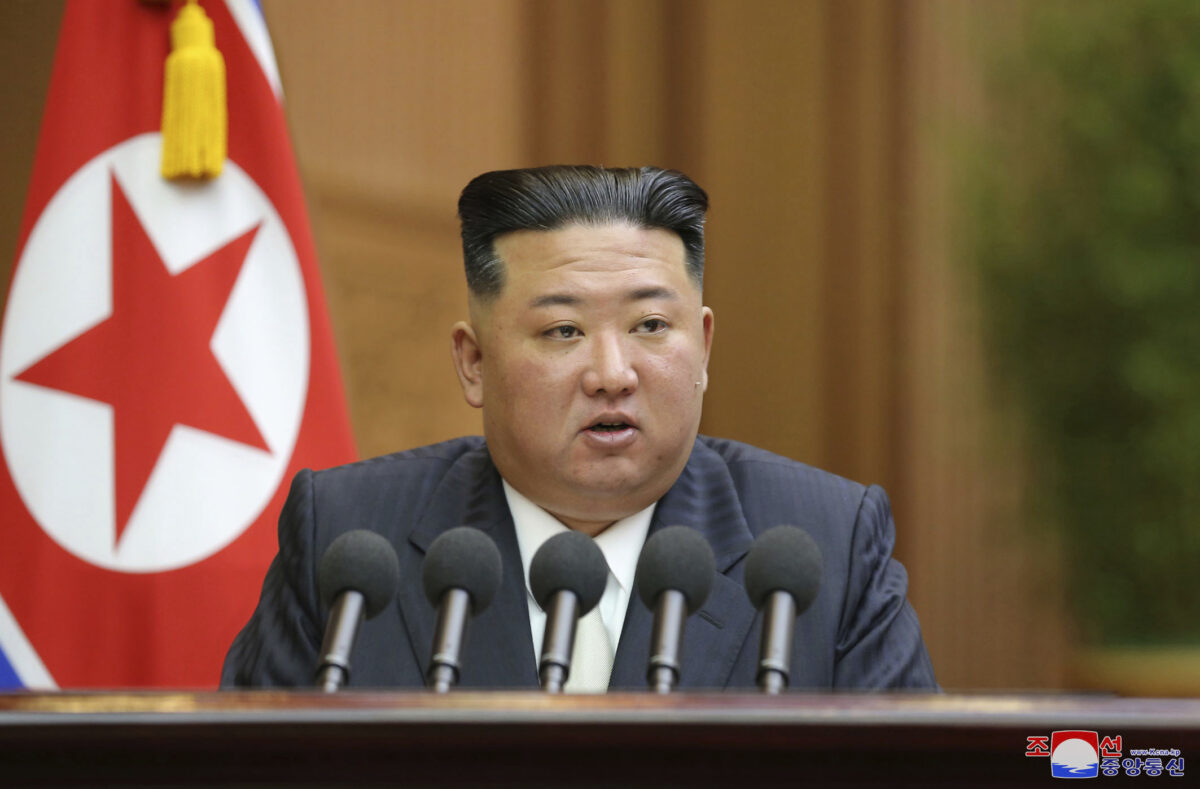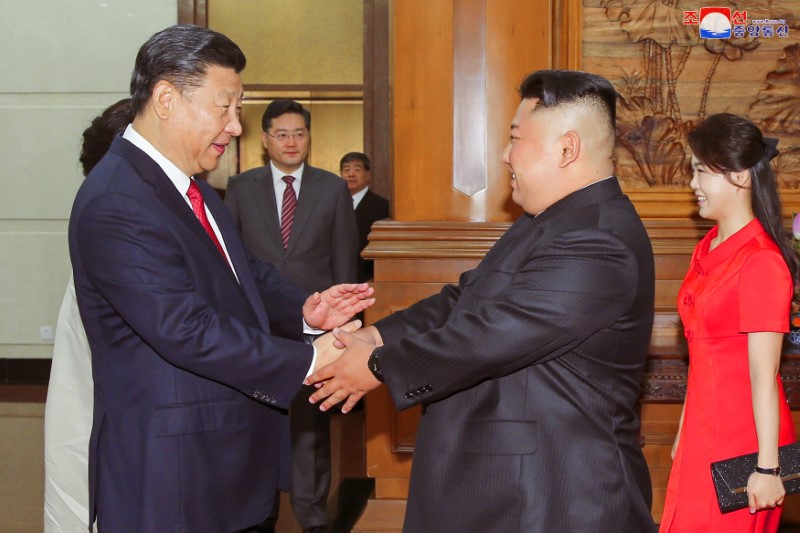North Korean Missiles—Keeping the US and Its Allies Distracted and Worried
CommentaryThis has been a busy year for North Korea’s missile developers—having launched 25 missiles (both ballistic and cruise missiles). The “shots” typically land in the ocean east of the Korean Peninsula but short of Japanese maritime territory. However, on Oct. 4, North Korea launched a ballistic missile that passed over northern Japan—prompting the Japanese government to issue a “take cover” warning to its citizens—before landing in the ocean to the east of Japan. This was the first North Korean missile shot over Japan since 2017. Why Is North Korea Amping Up Missile Tests Again? This is all part of the trial and error/experimentation that’s part and parcel of developing long-range missiles—particularly seeking to improve range, accuracy, payloads, delivery capabilities, etc. North Korea’s scientific and engineering skills are advanced, and they’ve gotten help from China, Iran, Pakistan, and others over the years—and still are. There is a tendency to think that because the Pyongyang regime is almost comically brutal and can’t (or won’t) feed its own people, it must be incapable of advanced technological achievements. Don’t bet on it. The North Koreans may not be lovable, but they are intelligent. North Korea has made gradual but steady progress with its missile and rocket (and nuclear weapons) capabilities over the last few decades. In some respects, it’s only an “engineering” problem, and they are figuring things out. North Korea has even built a submarine capable of launching ballistic missiles—and reportedly has another more capable one in the works. This isn’t easy to do. This photo provided by the North Korean government shows missiles during a military parade marking the ruling party congress, at Kim Il Sung Square in Pyongyang, North Korea, on Jan. 14, 2021. (Korean Central News Agency/Korea News Service via AP) Pyongyang’s missile and nuclear development have been slowed by outside pressure—led by the United States but including the Japanese, other Western nations, even the United Nations, and nominally the Chinese. However, it’s fair to say that such pressure has been sporadic, usually half-hearted, and rarely enforced in any serious way. One exception was the Banco Delta Asia affair in the mid-2000s when the United States sanctioned a Macau-based bank for handling North Korean finances. The Americans appeared to be serious. This got Pyongyang’s attention—and Beijing’s as well. But after a fierce internal battle, the Bush administration backed off—relaxing the sanctions and returning North Korea’s money in exchange for a promise to talk. Really? Importantly, so-called secondary sanctions have never been applied to China—beyond the merest of pinpricks. China is the lynchpin restraining North Korea and its missile and nuclear programs. Beijing could shut down North Korea in an afternoon—such is Pyongyang’s economic dependence on China. What Are Pyongyang’s Political Goals? It’s not as if the Kim regime has anything to boast about—with a third-world economy, a prison camp of a nation, and nowhere near enough food to feed its population. But missiles and nuclear weapons are what earn North Korea some “respect,” as dictator Kim Jong Un might say. Or, if not “respect,” at least “attention.” And he’s probably right. North Korean leader Kim Jong Un delivers a speech during a parliament in Pyongyang, North Korea, on Sept. 8, 2022. (Korean Central News Agency/Korea News Service via AP) North Korea’s conventional military forces are also a genuine threat—though mostly confined to the Korean Peninsula. However, with long-range missiles and nuclear weapons, the Kim regime is at least a regional player—and once it can range the U.S. mainland, it becomes a “global” player. Kim also views these advanced weapons as deterring an attack by the Americans, the South Koreans, and perhaps the Japanese. At the same time, remember that Kim still intends to go on the offensive and “take” the entire Korean Peninsula—when a few things fall into place. Somehow remove U.S. forces from South Korea, and Pyongyang will think it has an opening—especially with missiles and nukes in the arsenal. Firing a missile over Japan for the first time in five years is, of course, a political statement—to Tokyo not least—but there’s a broader strategic angle to it as well. Strategic Goals It’s helpful to consider North Korean activities as part of the larger East Asia security “tapestry.” Pyongyang wouldn’t be doing—or even be able to do—these things without Beijing’s implicit approval. Beijing doesn’t mind North Korea shooting off missiles and now and then a nuclear device. It distracts the Americans and the Japanese, and they can’t focus as much on Taiwan or Japan’s southern islands that China covets. Chinese leader Xi Jinping shakes hands with North Korean leader Kim Jong Un in Beijing in this undated photo released by North Korea’s Korean Central News Agency on June 20, 2018. (KCNA via Reuters) The Americans and

Commentary
This has been a busy year for North Korea’s missile developers—having launched 25 missiles (both ballistic and cruise missiles). The “shots” typically land in the ocean east of the Korean Peninsula but short of Japanese maritime territory.
However, on Oct. 4, North Korea launched a ballistic missile that passed over northern Japan—prompting the Japanese government to issue a “take cover” warning to its citizens—before landing in the ocean to the east of Japan. This was the first North Korean missile shot over Japan since 2017.
Why Is North Korea Amping Up Missile Tests Again?
This is all part of the trial and error/experimentation that’s part and parcel of developing long-range missiles—particularly seeking to improve range, accuracy, payloads, delivery capabilities, etc. North Korea’s scientific and engineering skills are advanced, and they’ve gotten help from China, Iran, Pakistan, and others over the years—and still are.
There is a tendency to think that because the Pyongyang regime is almost comically brutal and can’t (or won’t) feed its own people, it must be incapable of advanced technological achievements. Don’t bet on it. The North Koreans may not be lovable, but they are intelligent.
North Korea has made gradual but steady progress with its missile and rocket (and nuclear weapons) capabilities over the last few decades. In some respects, it’s only an “engineering” problem, and they are figuring things out. North Korea has even built a submarine capable of launching ballistic missiles—and reportedly has another more capable one in the works. This isn’t easy to do.

Pyongyang’s missile and nuclear development have been slowed by outside pressure—led by the United States but including the Japanese, other Western nations, even the United Nations, and nominally the Chinese. However, it’s fair to say that such pressure has been sporadic, usually half-hearted, and rarely enforced in any serious way.
One exception was the Banco Delta Asia affair in the mid-2000s when the United States sanctioned a Macau-based bank for handling North Korean finances. The Americans appeared to be serious. This got Pyongyang’s attention—and Beijing’s as well. But after a fierce internal battle, the Bush administration backed off—relaxing the sanctions and returning North Korea’s money in exchange for a promise to talk. Really?
Importantly, so-called secondary sanctions have never been applied to China—beyond the merest of pinpricks. China is the lynchpin restraining North Korea and its missile and nuclear programs. Beijing could shut down North Korea in an afternoon—such is Pyongyang’s economic dependence on China.
What Are Pyongyang’s Political Goals?
It’s not as if the Kim regime has anything to boast about—with a third-world economy, a prison camp of a nation, and nowhere near enough food to feed its population. But missiles and nuclear weapons are what earn North Korea some “respect,” as dictator Kim Jong Un might say. Or, if not “respect,” at least “attention.” And he’s probably right.

North Korea’s conventional military forces are also a genuine threat—though mostly confined to the Korean Peninsula. However, with long-range missiles and nuclear weapons, the Kim regime is at least a regional player—and once it can range the U.S. mainland, it becomes a “global” player.
Kim also views these advanced weapons as deterring an attack by the Americans, the South Koreans, and perhaps the Japanese. At the same time, remember that Kim still intends to go on the offensive and “take” the entire Korean Peninsula—when a few things fall into place. Somehow remove U.S. forces from South Korea, and Pyongyang will think it has an opening—especially with missiles and nukes in the arsenal.
Firing a missile over Japan for the first time in five years is, of course, a political statement—to Tokyo not least—but there’s a broader strategic angle to it as well.
Strategic Goals
It’s helpful to consider North Korean activities as part of the larger East Asia security “tapestry.” Pyongyang wouldn’t be doing—or even be able to do—these things without Beijing’s implicit approval.
Beijing doesn’t mind North Korea shooting off missiles and now and then a nuclear device. It distracts the Americans and the Japanese, and they can’t focus as much on Taiwan or Japan’s southern islands that China covets.

The Americans and the Japanese have limited resources. They are forced to devote some portion to guard against North Korean missiles (and maybe nuclear weapons) directed against Japan and U.S. bases in the country and beyond—or to handle a “conventional” fight on the Korean Peninsula.
Retired U.S. Navy officer Brent Sadler describes an increased North Korean missile threat as potentially creating a political crisis in Japan that demands moving limited Japanese naval and air forces “up north” to deal with threats from the North Korean quarter.
Over the last few years, but especially in the previous year or so, we have seen the Chinese and Russians step up naval and air operations—separately and sometimes together—near and around Japan, the Korean Peninsula, and even the Aleutian Islands near Alaska. North Korean actions are properly viewed as part of a comprehensive—if loosely coordinated—effort to distract and put the Americans and the Japanese (and the South Koreans) on the back foot.
And this all ties into a Taiwan scenario. Whenever China decides it is done waiting for Taiwan to give up without a fight, expect North Korea to “make a move” that requires serious U.S., Japanese, and South Korean attention.
Another big “plus” from Beijing’s perspective is that North Korea’s acting up has for years convinced the Americans they must go easy on China since they need Beijing’s cooperation to solve the “North Korea problem.’”
Respond to the Chinese takeover of the South China Sea? Can’t do that. We need China’s help on North Korea.
Punish China for exporting the fentanyl that’s killing 100,000 Americans a year? No can do. We need China’s help on North Korea.
You get the idea.
My guess is the North Koreans won’t hit anyone with a missile or a nuke until Beijing gives the go-ahead. And I don’t think they are quite ready for that. But maybe not for long. For now, Beijing (via Pyongyang) is just sending a message of what might come if Japan pokes its nose into the Taiwan issue and isn’t “nice” to China. And that message is intended for the Americans as well.
Views expressed in this article are the opinions of the author and do not necessarily reflect the views of The Epoch Times.












